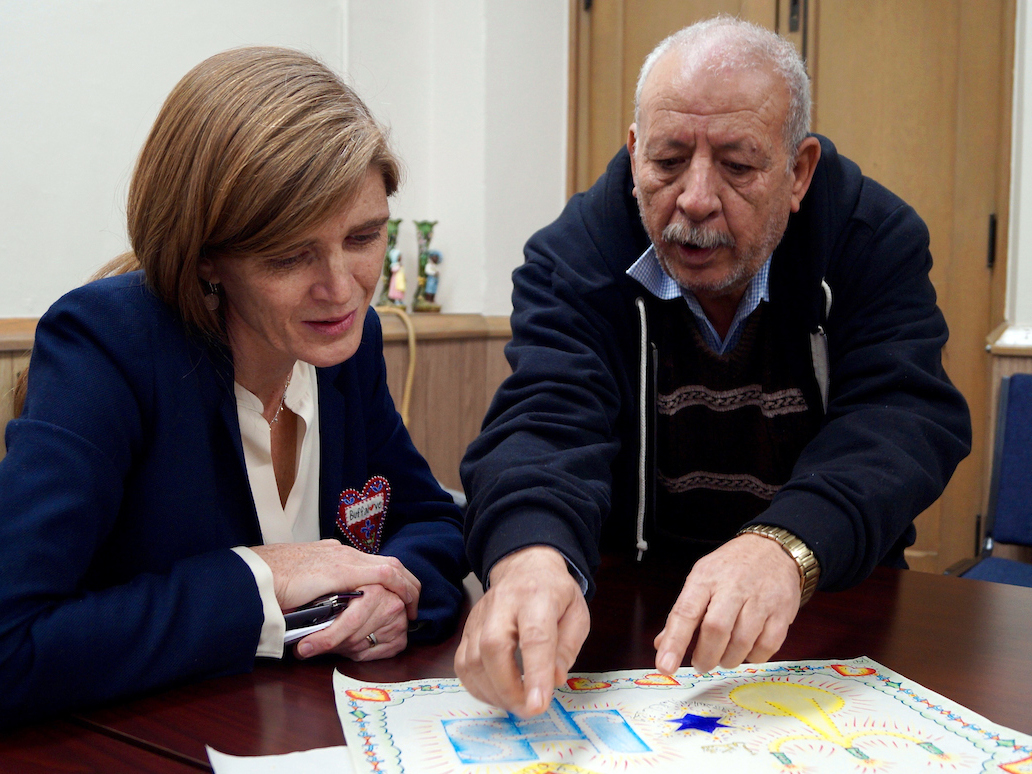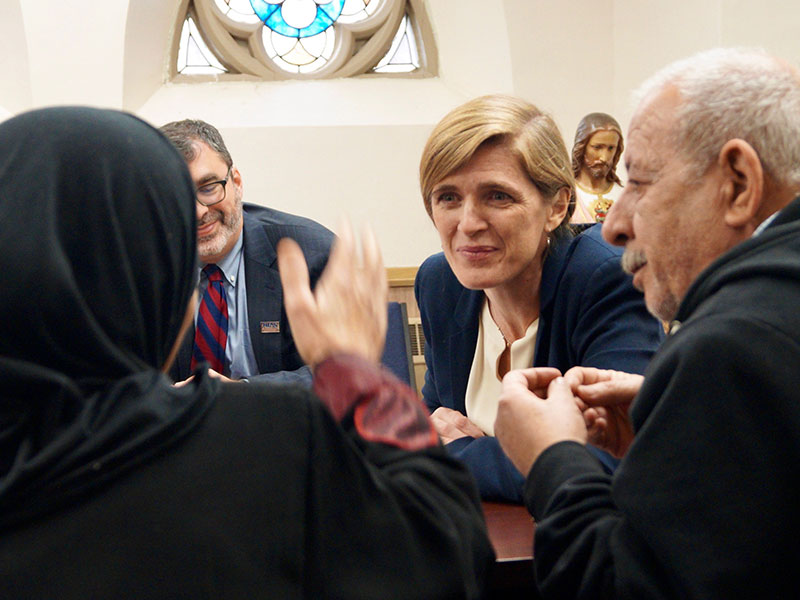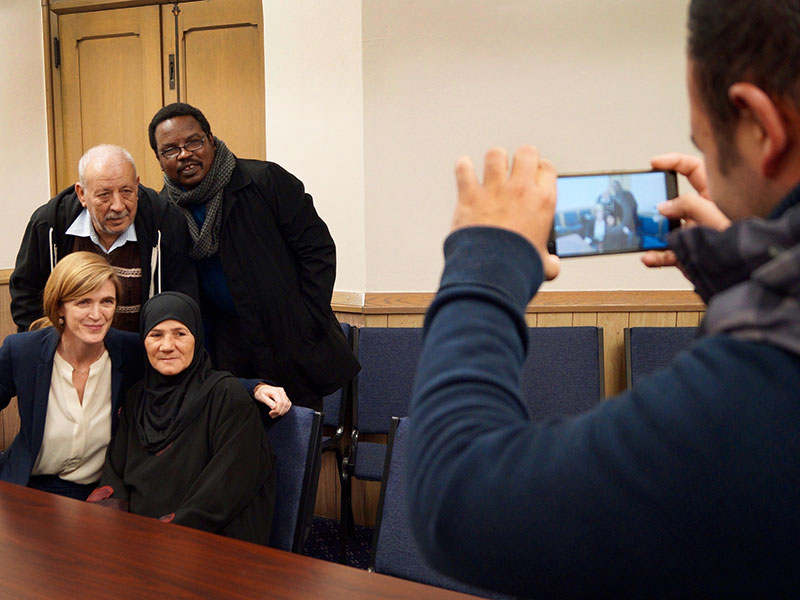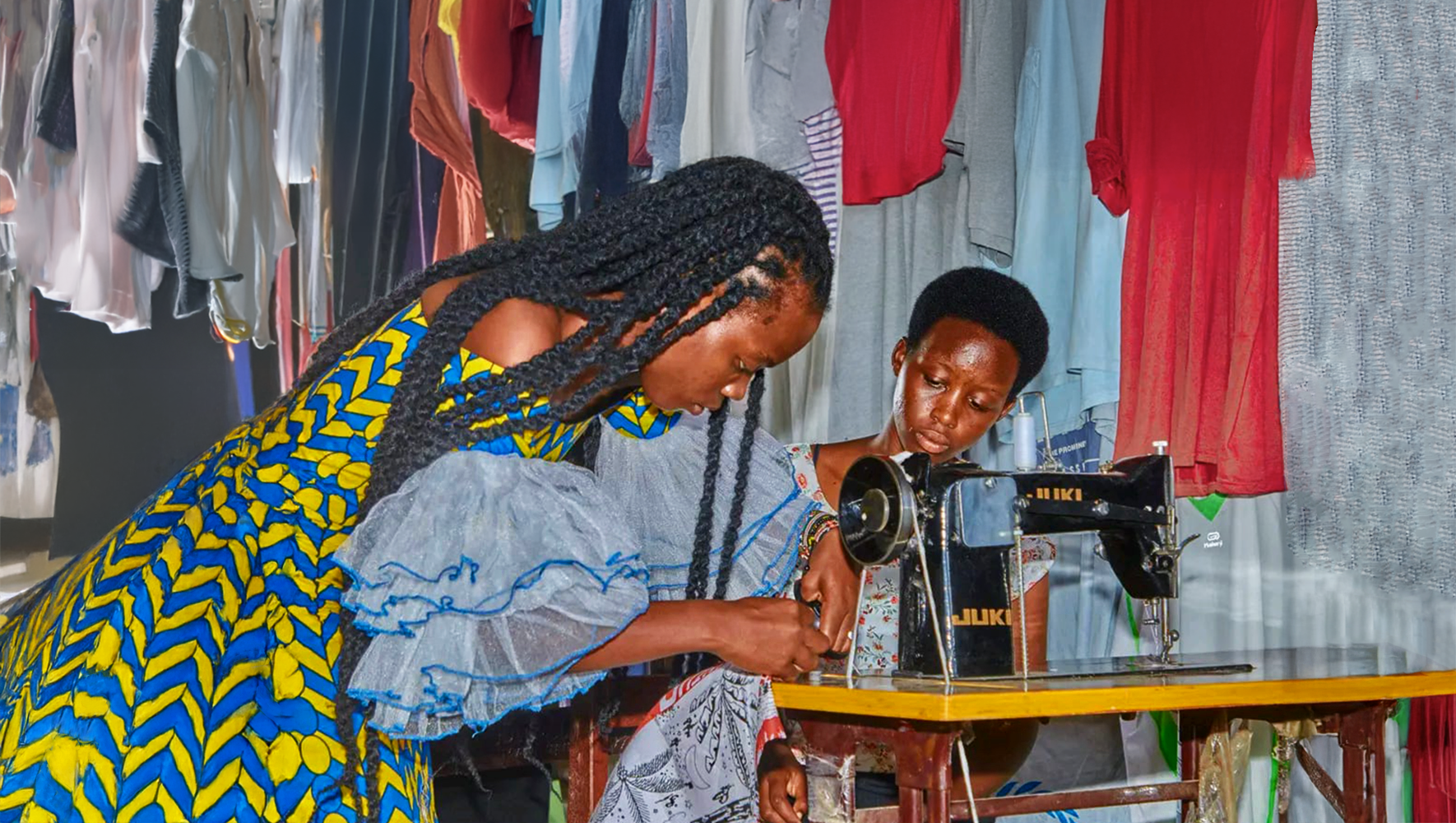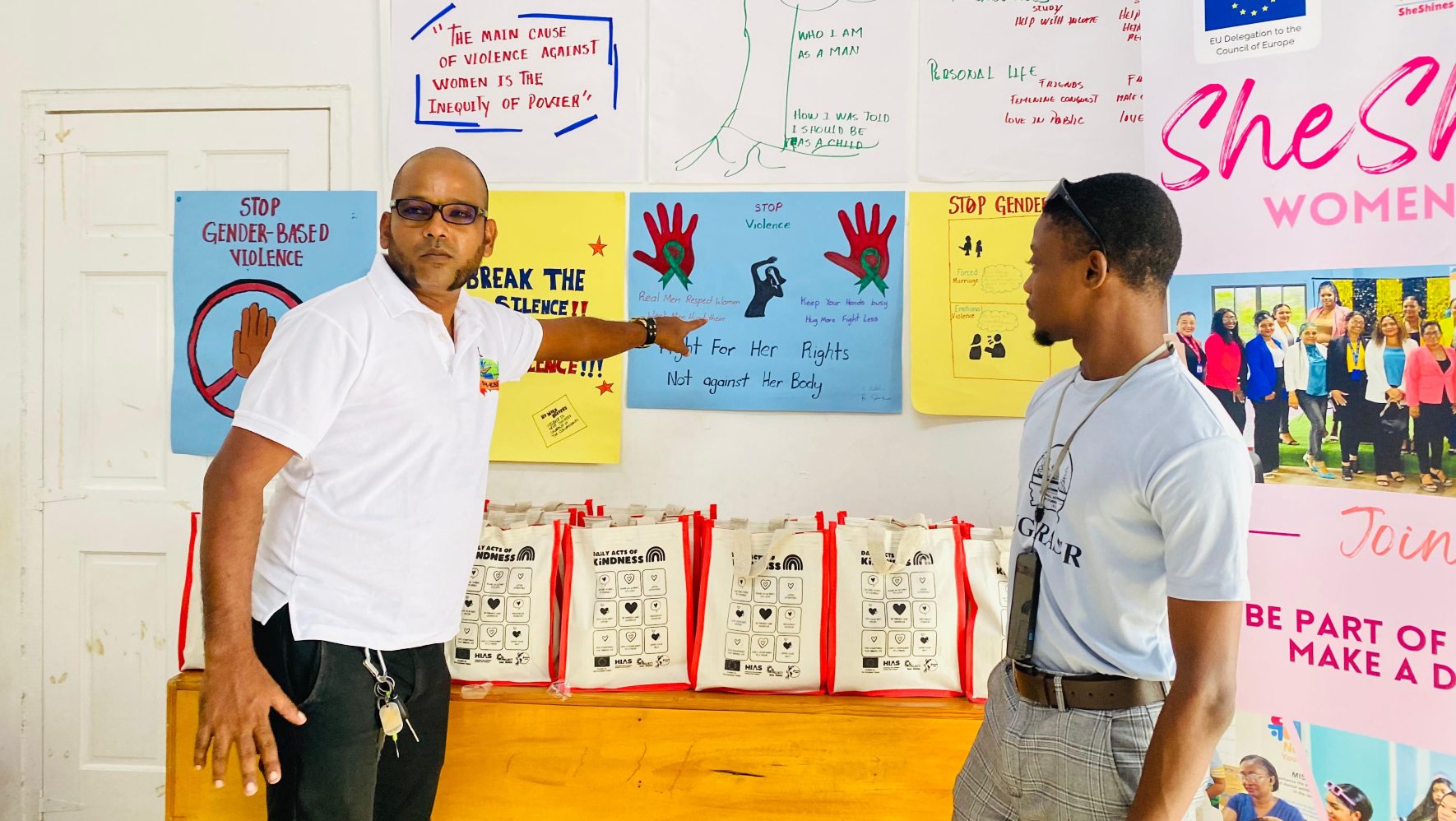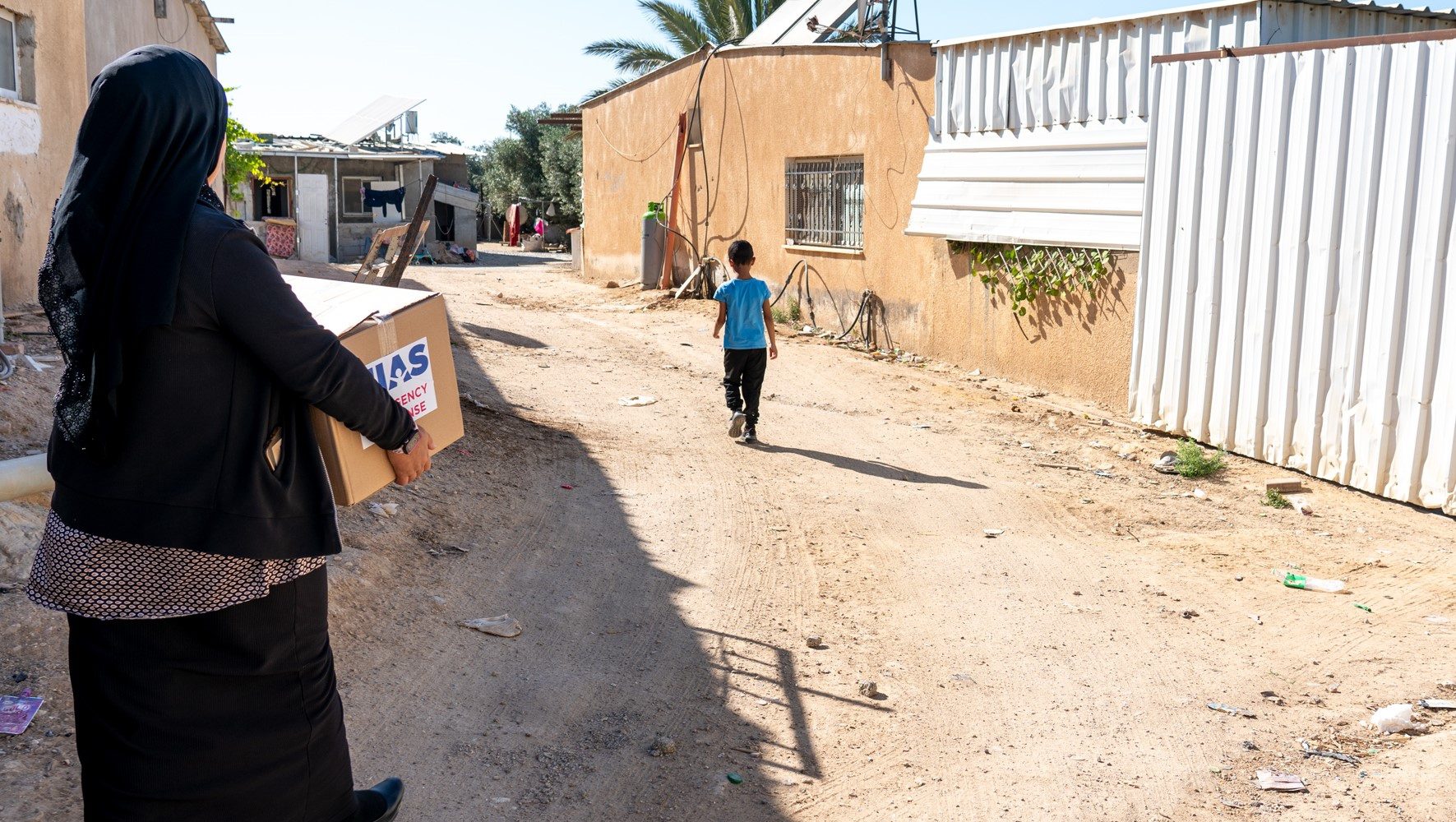After War, and Waiting, Syrian Refugees Find Welcome in Buffalo
By Bill Swersey, HIAS.org
Dec 01, 2016
The middle-aged man sat quietly in a nondescript refugee center conference room. By his side, his wife, still recovering from a recent stroke, avoided making eye contact with those in the room. Their son chatted quietly in Arabic with an interpreter.
On the table before them lay a hand-drawn illustration, a colorful, heartfelt expression of thanks to those who had helped the Ay Toghlo family reach safety after years of tragedy and trauma.
Mohammad Ay Toghlo, 67, his wife Eidah Al Suleiman, 54 and their son Najati, were waiting for a visitor. Samantha Power, the U.S. ambassador to the United Nations, was on her way to meet them, one stop on a day-long visit to Buffalo, New York just before Thanksgiving.
The Ambassador arrived and took a seat at the table. After introductions, she asked the family to tell their story. Slowly, deliberately, Ay Toghlo told how life had changed as war came to their village outside Damascus.
He shared the harrowing stories of witnessing the murder of their pregnant daughter and the kidnapping of their son. He described the subsequent scramble to sell their car to come up with a large ransom payment. Finally, he spoke of the welcome they had received in Buffalo, where they were resettled with help from Jewish Family Service of Buffalo, HIAS’ local partner in the area.
Resettlement, Najati told the Ambassador and HIAS CEO and President Mark Hetfield, “was a big relief for us. In Lebanon, we never felt safe because at any time we can be extradited or kidnapped by the Assad forces.”
“I thought I’m dreaming because the United States for us is a big thing. I don’t even see that in my dreams. I was so happy,” Mohammed added.
After recounting the family’s ordeal, the elder Ay Toghlo showed Ambassador Power and Hetfield the drawing he had made to express his gratitude to Jewish Family Service and the United States. The drawing, he explained said “Thank you, USA” and featured hearts bearing the initials of Jewish Family Service and a large Jewish star, surrounded by the phrase “Thank you, Jewish Family”, written in Arabic.
"We don't often enough see a Jewish star embedded in Arabic letters. This is very meaningful," Ambassador Power told the family.
“Religion is how we treat one another. No matter what religions we are, if you treat me well, I will respect you," Al Toghlo replied.
“It was very powerful to hear this Syrian refugee family speak about how ‘Jewish Family’ helped them,” said Hetfield of the meeting.
Despite their warm welcome in Buffalo, the family’s move has been bittersweet. Their other son, daughter-in-law and grandchildren are still in Lebanon, awaiting resettlement. Worry about their safety and well being is clearly never far from their minds.
"HIAS is so honored to work with partners like the JFS of Buffalo to help Syrian refugees become new Americans, while also helping them cope with the heartbreak of being separated from children and family left behind in the region,” said Hetfield.
Despite their worries, the Ay Toghlos are working hard to build a new life here. “What we watch in media is that there are Americans who don’t like Syrian refugees. But our experience in Buffalo, we find all love. We didn’t have any bad experience with anybody,” Najati later told the Buffalo News. “Wherever we go, we find helpful people, loving people.”
In recent years, the city of Buffalo has welcomed new arrivals with open arms. The refugees, in turn, have been a boon to the local economy, as Ambassador Power pointed out during a town-hall meeting at the University of Buffalo.
“In the past 15 years, nearly 14,000 refugees have been resettled in this city, and thousands more refugees have chosen to come here after having been settled elsewhere in the United States. So if you want to study the impact of welcoming refugees, and if you want to see what it looks like in a place where thousands of refugee families are choosing to put down new roots, it makes sense to come to Buffalo. And the facts here speak for themselves.
“Up to 2005, Buffalo had seen its population decline for five straight decades. That trend was reversed when – thanks to the leadership of Mayor Byron Brown, local resettlement agencies, and faith groups – the city started taking in more refugees. Over the past six years, Buffalo’s West Side and the Black Rock/Riverside neighborhoods – where the majority of refugees have settled – have seen faster job growth, a higher rate of new businesses formed, and a swifter rise in housing values compared to the other parts of Buffalo and compared to national averages.
“What I saw today in Buffalo also echoes what we have seen across America for decades: given a helping hand and some time to gain their footing, the overwhelming majority of refugees more than pay back the modest support that they receive,” Power said.
“People all across the country are talking about Buffalo as a model for how refugees can contribute,” Power told reporters during her visit. “At a time when some are calling into question a program which has offered so much to our communities, as well as to the families who come here so vulnerable, this seemed like a very important city to highlight, and learn from.”
